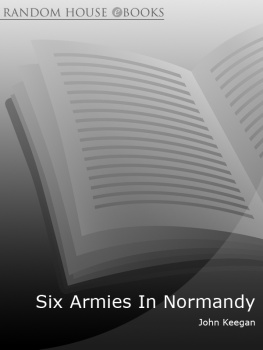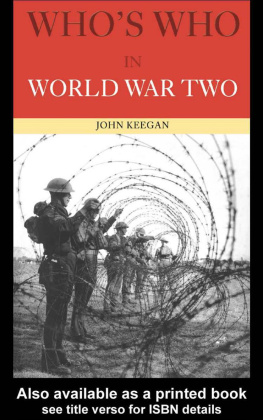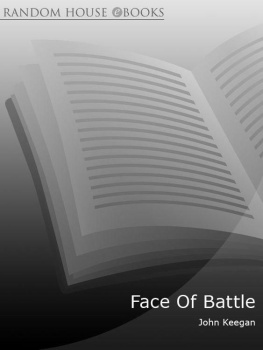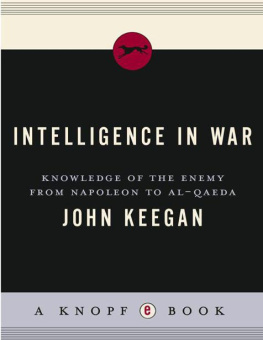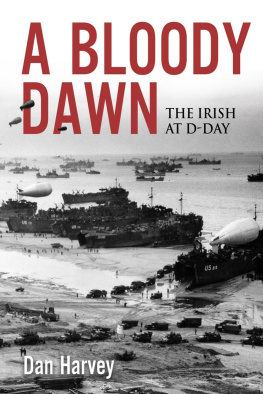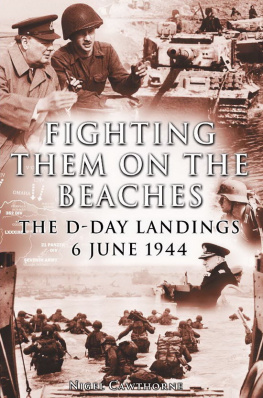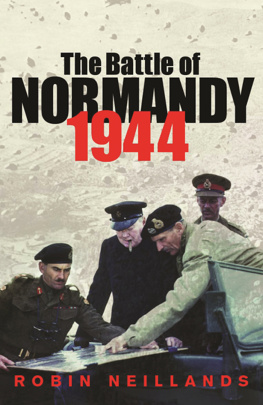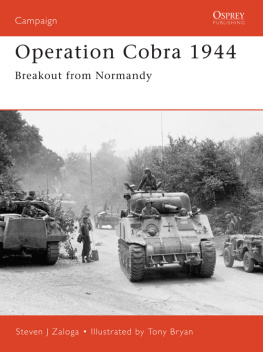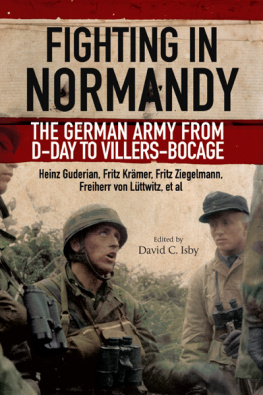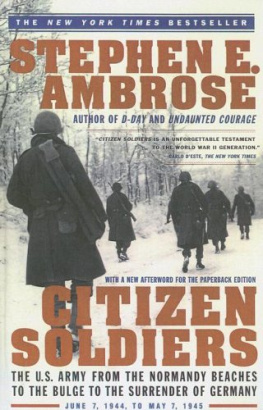
This eBook is copyright material and must not be copied, reproduced, transferred, distributed, leased, licensed or publicly performed or used in any way except as specifically permitted in writing by the publishers, as allowed under the terms and conditions under which it was purchased or as strictly permitted by applicable copyright law. Any unauthorised distribution or use of this text may be a direct infringement of the authors and publishers rights and those responsible may be liable in law accordingly.
Version 1.0
Epub ISBN 9781446498132
www.randomhouse.co.uk
Published by Pimlico 2004
8 10 9 7
Copyright John Keegan 1982
This book is sold subject to the condition that it shall not, by way of trade or otherwise, be lent, resold, hired out, or otherwise circulated without the publishers prior consent in any form of binding or cover other than that in which it is published and without a similar condition including this condition being imposed on the subsequent purchaser
First published in Great Britain by Jonathan Cape Ltd 1982
First Pimlico edition 1992
Second Pimlico edition 2004
Pimlico
Random House, 20 Vauxhall Bridge Road
London SW1V 2SA
Random House Australia (Pty) Limited
20 Alfred Street, Milsons Point, Sydney
New South Wales 2061, Australia
Random House New Zealand Limited
18 Poland Road, Glenfield
Auckland 10, New Zealand
Random House South Africa (Pty) Limited
Endulini, 5A Jubilee Road, Parktown 2193, South Africa
Random House UK Limited Reg. No. 954009
A CIP catalogue record for this book is available from the British Library
ISBN 1-8441-3739-2

Contents
To my mother in thanks for a happy wartime childhood
About the Author
John Keegan is the Defence Editor of the Daily Telegraph and Britains foremost military historian. The Reith Lecturer in 1998, he is the author of many bestselling books including The Face of Battle, The Mask of Command, Battle at Sea, The Second World War, A History of Warfare (awarded the Duff Cooper Prize), Warpaths, The Battle for History, The First World War, and most recently, Intelligence in War.
For many years John Keegan was the Senior Lecturer in Military History at the Royal Military Academy Sandhurst, and he has been a Fellow of Princeton University and Delmas Distinguished Professor of History at Vassar. He is Fellow of the Royal Society of Literature. He received the OBE in the Gulf War honours list, and was knighted in the Millennium honours list in 1999.
List of Illustrations
Plates
Eisenhower addressing 502nd Parachute Infantry
Eisenhower and Montgomery
Patton and Bradley
Rommel inspecting the Normandy defences
SS anti-aircraft sentries in Normandy
American gliders in Normandy after D-Day
505th Parachute Infantry dead awaiting identification
A child casualty being treated
502nd Parachute Infantry patrol at St Marcouf
Parachutists of the 501st and villagers of Ste Marie-du-Mont
Damaged landing-craft and Canadian dead at Dieppe
German engineers scattering for cover before D-Day
German infantry practise manning beach defences
Canadian wounded awaiting evacuation on Juno Beach
Follow-up Canadian troops prepare to advance inland
The great storm of mid-June 1944
British infantry holding the front line
The 9th Cameronians hold an open-air service
Highlanders of the 7th Seaforths waiting on the start line
2nd Argylls being piped forward to the Epsom battle
6th Royal Scots Fusiliers advancing during the Epsom battle
An SS tank officer and crewman under escort to the rear
Scottish soldiers bringing in a prisoner
A British mortar team firing in a cider orchard
Dead cattle in the fields
German infantry counter-attacking
Caen after the battle
Tank and infantry officers confer before Operation Goodwood
4th Dorsets waiting to advance during Operation Goodwood
Infantry following tanks during Operation Goodwood
A Cromwell tank crosses the Caen canal before Operation Goodwood
Infantry crossing the skyline
American infantry sheltering during the Mortain counter-attack
German prisoners taken in the break-out of July 25th, 1944
Polish tank commanders prepare to close the Falaise gap
Canadian tanks forming up for the Battle of the Falaise Pocket
The interior of the Falaise Pocket after its closure
General Maczek with Montgomery
A French tank leads the 2nd French Armoured Division down the Champs Elyses
A German prisoner in the hands of the Resistance
Liberators at the Lion of Belfort
French armoured cars in the Place de lHtel de Ville
German officers in the Htel Majestic
Maps
The German order of battle in the west, June 6th, 1944
The American airborne landing zones, 82nd and 101st Airborne Divisions, June 6th, 1944
The Canadian beach assault, June 6th, 1944
Operation Epsom, the Battle of the Scottish Corridor, June 24thJuly 1st, 1944
Operation Goodwood, July 18th19th, 1944
The Mortain counter-attack, August 6th7th, 1944
The Battle of the Falaise Pocket, August 16th20th, 1944
The liberation of Paris, August 25th, 1944


Foreword
Five years ago, in a book I called The Face of Battle, I set out to explore the predicament of the individual on the battlefield. Though a practising military historian, and the colleague in my academic life of professional soldiers, I had no understanding of the risks which the warrior faced in his encounter with his enemy, or of the means he found to quell his terrors and master himself at the point of maximum danger. What I discovered, however near to the truth it was, surprised me. I learnt of the universality of fear, of the operation of inducements and coercion in its conquest but, above all, of the importance of male honour, as judged by a mans immediate comrades, in sustaining the soldiers resolution.
But, despite my concentration on the individual and the small group, I was also drawn to a recognition of the peculiar nature of the larger body to which both belong, the army itself. Armies are universal institutions which, in the dimension of purpose and authority, closely resemble each other. Yet each is also a mirror of its own society and its values: in some places and at some times an agent of national pride or a bulwark against national fears, or perhaps even the last symbol of the nation itself; elsewhere and otherwise an instrument of national power deprecated, disregarded and of very last resort. It seemed to me worth finding some episode through which the varying status of national armies might be exemplified. And in the Normandy campaign of 1944 I believed that I had stumbled upon it. I knew the battlefield well. I had long been struck by the very different motives inspiring the armies which action conjoined there. And, over the years, I had become familiar with the wealth of corporate history and personal reminiscence which the campaign has thrown up. What follows is therefore another attempt to understand, from a different angle of vision, the role which warfare and its institutions play in social life.

